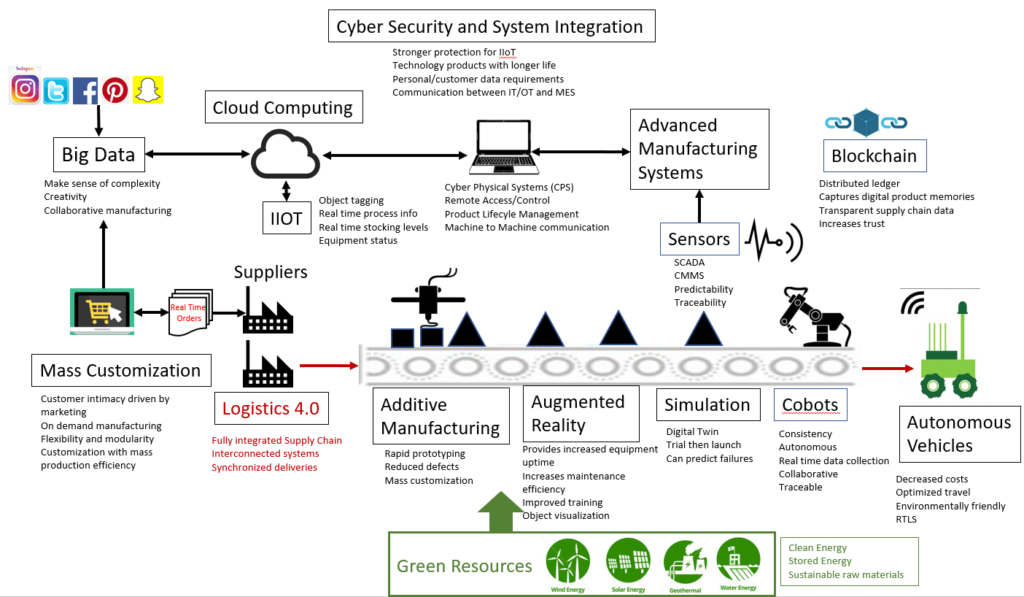In this blog, I want to introduce the concept of Industry 4.0 or sometimes referred to as Smart Manufacturing. It is called industry 4.0 because it is the fourth Industrial Revolution.
The first Industrial Revolution which started in 1784 brought about mechanization through steam and waterpower. It is the first time that our lives took a giant step forward.
The second Industrial Revolution started in 1870 and brought about mass production and the assembly line, which were all powered by electricity.
We identify the Third Industrial Revolution as starting in 1969 which brought us computers and automated production. We are no longer bound to Earth and can communicate on a global level.
Industry 4.0 started in 2015. Notice that there have been almost 100 years between each Industrial Revolution, but it has only been 46 years between the Industrial Revolution, 3.0 and 4.0.
The nine key enablers of Industry 4.0 include:
- Cyber Security/Blockchain
- Cloud Computing
- IIoT- Industrial Internet of Things
- Big Data
- Systems Integration
- Autonomous Robots-Cobots
- Additive Manufacturing- 3D printing
- Augmented reality
- Simulation/Digital Twins
As we move through the Industry 4.0 series of blogs, we will cover each of these in more detail, but I want to give you a brief scenario of how these will fit together to form a Smart Value Stream®.
Let’s say that my wife is watching a TV show and sees an actress wearing a beautiful dress on a popular show. She thinks it would also look good on her, so she searches on social media to see if she might buy one.
She notices that the dress appears on Pinterest, is being talked about on Facebook, and she sees pictures of it on Instagram. Within 48 hours of seeing the dress on the TV show, she finds it available for sale online. How did this happen?
Using Big Data (Machine learning, Deep learning, Predictive Analytics) the dress company monitored social media to see if there was sufficient demand for selling the dress to consumers. After rapidly analyzing the data, the company placed purchase orders with its manufacturers and on-demand suppliers.
These suppliers brought in material from their connected supply chains and produced the orders within 24 hours. Once the dress selling company was alerted that they had inventory available, they launched their micro-site with the dress offered as an item that customers could order. The flexibility of the supporting systems made such a quick turnaround possible.
While there are many support systems throughout the Smart Value Stream®, the goal of the entire system is to provide information that increases transparency throughout the Smart Value Stream®.
The infographic below provides additional information on how these key enablers for Industry 4.0 will fit together and support each other. The whole goal of the Smart Value Stream® is to remain flexible, provide transparency and security, and provide real-time customized products to our eager customers.

As we progress through our series of Industry 4.0 blog posts, we will talk about each Industry 4.0 in more depth.
You can listen to the podcast at American Lean Weekday!
You can join my YouTube channel and listen to the podcasts here!
As always it is an honor to serve you and I hope that you and your company are getting better every day!

